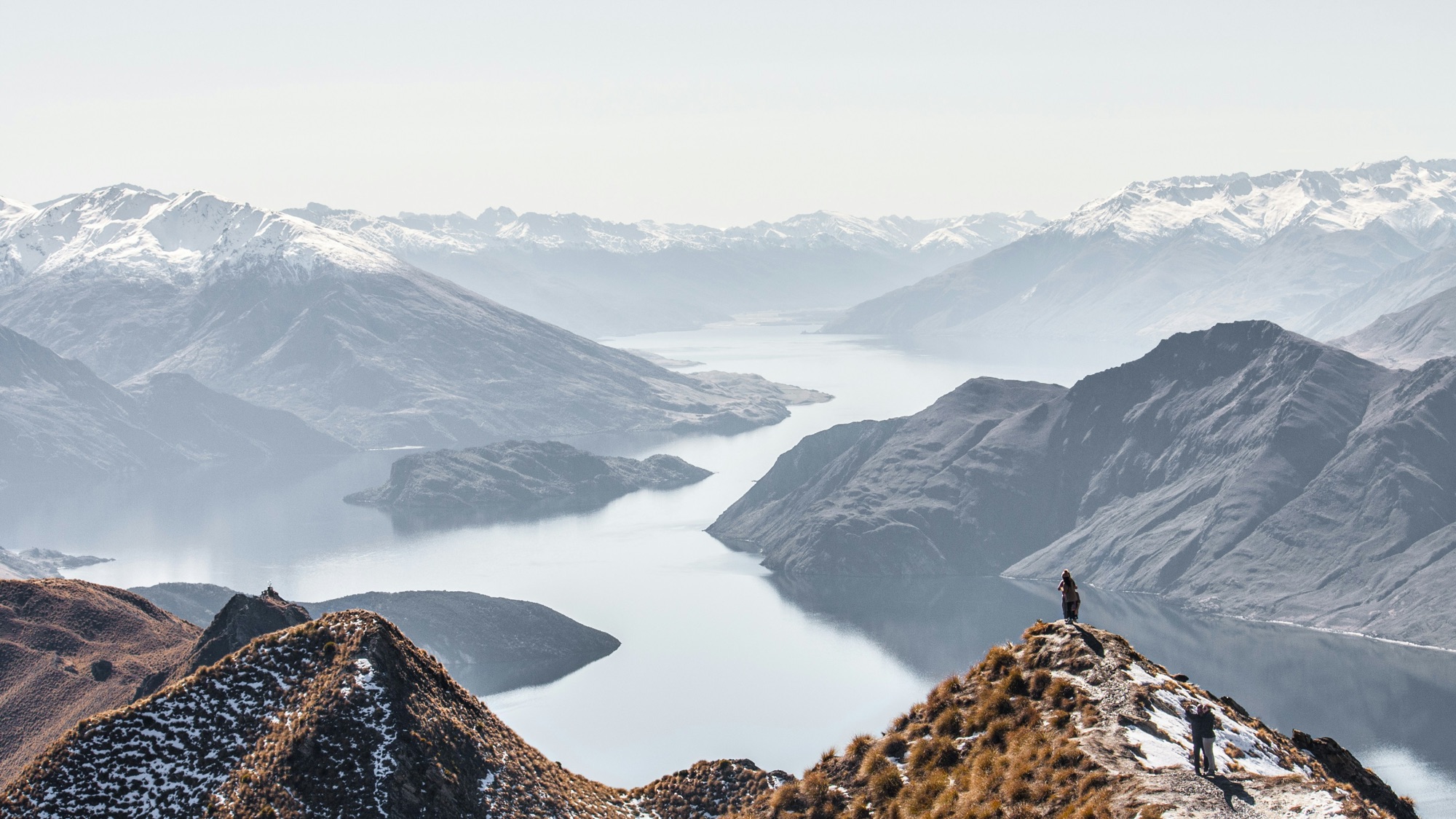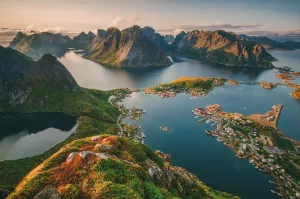New Zealand, known for its breathtaking landscapes, friendly locals, and rich culture, is a dream destination for many travelers. While it may share some cultural similarities with its neighbor Australia, New Zealand is unique in its own right. For Americans planning a visit, there are a few key things to be aware of that will help ensure a smooth and enjoyable trip. Here are 15 things you should know before visiting New Zealand.
1. New Zealand Is Bigger Than It Looks
Although New Zealand might look small on a map, it’s larger than many people think. The country is made up of two main islands, the North Island and South Island, and driving between destinations often takes longer than expected. While it’s easy to get around, distances can be deceptive, especially given the mountainous terrain and winding roads. If you’re planning to explore both islands, don’t try to pack too much into a short time. It’s best to allow for extra travel time so you can fully enjoy the stunning scenery and outdoor activities.
2. The Weather Is Unpredictable
New Zealand’s weather can be highly unpredictable, and it’s not uncommon to experience four seasons in one day. Even in the summer months, conditions can change rapidly. The North Island tends to have a milder, subtropical climate, while the South Island can be cooler, especially in the mountainous regions. It’s essential to pack layers, even if you’re visiting in the warmer months, and to be prepared for rain, sun, and everything in between. Locals often joke about New Zealand’s changeable weather, but it’s a reality that visitors need to be ready for, particularly if you plan to do outdoor activities like hiking.
3. Driving Is on the Left Side of the Road
For American travelers, one of the most significant adjustments in New Zealand is that driving is on the left side of the road, similar to the UK and Australia. This can take some getting used to, especially when navigating roundabouts and intersections. New Zealand’s roads are often narrow and winding, particularly in rural and mountainous areas, so it’s important to stay alert and drive cautiously. If you’re planning a road trip, be sure to familiarize yourself with local road rules and give yourself plenty of time to get comfortable driving on the left.
4. Tipping Is Not Common
In New Zealand, tipping is not expected or required as it is in the United States. Service workers in New Zealand generally receive a fair wage, so tipping isn’t built into the culture the way it is in other countries. While you may tip for exceptional service in a restaurant or at a hotel, it’s not necessary, and no one will be offended if you don’t leave a gratuity. In fact, most locals don’t tip at all, so there’s no need to worry about calculating tips on your bills. This can make dining out and using services like taxis or tours more straightforward for travelers.
5. The Māori Culture Is Integral to New Zealand’s Identity
New Zealand has a rich and diverse Māori culture, which plays a central role in the country’s identity. The Māori people are the Indigenous Polynesian inhabitants of New Zealand, and their language, customs, and traditions are deeply woven into the fabric of Kiwi life. Visitors to New Zealand will notice Māori influences everywhere, from place names and cultural performances to public events and government ceremonies. It’s important to be respectful of Māori culture and learn about its significance. Many tourists visit Māori cultural sites, attend a haka performance (a traditional Māori war dance), or visit the Waitangi Treaty Grounds, where the founding document of modern New Zealand was signed between the Māori chiefs and the British Crown in 1840.
6. New Zealand Is an Outdoor Enthusiast’s Paradise
For those who love the outdoors, New Zealand is a true paradise. The country is famous for its stunning natural landscapes, including mountains, forests, beaches, glaciers, and lakes. Whether you’re into hiking (called tramping in New Zealand), skiing, mountain biking, or water sports, there’s something for every type of adventurer. National parks like Fiordland, Tongariro, and Aoraki/Mount Cook offer world-class hiking trails and breathtaking views. Be sure to pack appropriately, as New Zealand’s natural beauty is best explored on foot or by boat. Always check the weather and trail conditions before setting out, as some routes can be challenging, and the weather can change quickly.
7. Public Wi-Fi Can Be Limited in Rural Areas
While you’ll find reliable Wi-Fi in cities and major towns, public Wi-Fi can be limited or even non-existent in some of New Zealand’s more rural and remote areas. If you plan on visiting remote parts of the country, it’s a good idea to download offline maps, keep important information stored on your phone, and let people know where you’ll be ahead of time. Purchasing a local SIM card with data is also a smart move, as this can give you access to the internet on your mobile device when Wi-Fi is not available.
8. New Zealand Is Very Eco-Conscious
New Zealanders, or Kiwis, are passionate about their environment, and the country places a strong emphasis on eco-consciousness. Visitors are encouraged to be mindful of their impact on the environment. Recycling, reducing waste, and following strict guidelines in national parks and conservation areas are important practices in New Zealand. When visiting outdoor areas, it’s crucial to stick to marked trails, carry out any rubbish, and respect the country’s unique ecosystems. The Department of Conservation (DOC) does a great job of managing New Zealand’s natural areas, and you’ll see plenty of signage and information about how to protect the environment during your visit. If you’re camping, hiking, or exploring the outdoors, always follow the “Leave No Trace” principles—this means leaving the environment exactly as you found it, which helps preserve New Zealand’s stunning landscapes for future generations. Additionally, many towns and cities are committed to sustainability, with eco-friendly accommodation options, farmers’ markets, and initiatives to reduce plastic waste.
9. You’ll Hear “Kia Ora” Everywhere
One phrase that you’ll hear often in New Zealand is “Kia Ora”, a Māori greeting that means “hello” or “good health.” It’s a warm and friendly expression used in everyday interactions, and it’s common to hear both Māori and non-Māori people use it. As a visitor, feel free to use Kia Ora when greeting others—it’s a simple way to show respect for the local culture and make connections with locals. Beyond greetings, you’ll notice many Māori words integrated into daily conversation, such as whānau (family), kai (food), and mana (prestige or authority). Learning a few key Māori phrases can enhance your travel experience and demonstrate your appreciation for New Zealand’s cultural diversity.
10. It’s a Safe Destination, But Still Take Precautions
New Zealand is often ranked as one of the safest countries in the world, with low crime rates and a general sense of security for both locals and tourists. Violent crime is rare, and it’s generally safe to walk around cities and towns, even at night. However, like anywhere, it’s still important to take basic safety precautions. Don’t leave valuables unattended, lock your car when parking, and use common sense in unfamiliar areas. If you’re planning outdoor activities like hiking or camping, always let someone know your plans, especially if you’re heading into remote areas. The New Zealand outdoors can be challenging, and weather conditions can change quickly, so be prepared and always check in with local information centers or rangers before setting out.
11. Biosecurity Is Taken Very Seriously
New Zealand has strict biosecurity laws in place to protect its unique ecosystems and agricultural industry. When entering the country, you’ll go through customs procedures that involve declaring any food, plants, or animal products you’re bringing with you. Even things like hiking boots or camping gear need to be clean and free of dirt to prevent the introduction of non-native species or diseases. The penalties for not declaring restricted items can be steep, including fines, so it’s best to err on the side of caution and declare anything that might be questionable. Biosecurity officers may inspect your bags, and you’ll notice signs reminding travelers of these important rules.
12. New Zealand’s Cuisine: More Than Just Fish and Chips
New Zealand offers a diverse and delicious food scene, much of it influenced by the country’s rich agricultural tradition. While fish and chips is a classic Kiwi favorite, there’s so much more to explore. Fresh, locally sourced ingredients are a hallmark of New Zealand cuisine, including lamb, venison, seafood, and dairy products. Don’t miss out on trying a meat pie, which is a popular snack, or pavlova, a beloved dessert made from meringue and topped with fresh fruit. If you’re visiting the South Island, be sure to try green-lipped mussels or bluff oysters, both local delicacies. New Zealand is also home to a burgeoning wine industry, particularly in regions like Marlborough and Central Otago, known for producing world-class Sauvignon Blanc and Pinot Noir.
13. Respect for Nature and the Concept of “Kaitiakitanga”
New Zealanders have a deep respect for nature, which is reflected in the Māori concept of “kaitiakitanga”, meaning guardianship or stewardship of the environment. This concept encourages people to take care of the land, water, and air, preserving it for future generations. As a visitor, you’re expected to uphold these values by treating the natural world with care and respect. Whether you’re exploring beaches, forests, or mountains, always follow local guidelines, don’t disturb wildlife, and leave no trace behind. Many areas are protected under conservation laws, and it’s important to stick to designated trails and avoid taking natural souvenirs like rocks or shells.
14. The Time Zone Difference Is Significant
New Zealand operates on New Zealand Standard Time (NZST), which is 17 to 21 hours ahead of U.S. time, depending on where you’re traveling from and whether it’s daylight saving time. This significant time difference can lead to jet lag when you first arrive, so it’s wise to allow yourself a few days to adjust, especially if you’re planning an active itinerary. To help minimize jet lag, try to stay hydrated during your flight, adjust your sleeping schedule before leaving, and spend time outdoors in natural light once you arrive. The good news is that once you adjust, the peaceful and serene atmosphere of New Zealand will make it easy to settle in and enjoy your trip.
15. New Zealanders Are Friendly and Welcoming
One of the things that makes New Zealand such a special place to visit is the warmth and hospitality of its people. Kiwis, as New Zealanders are commonly called, are known for their friendly, laid-back demeanor and their willingness to help visitors. Don’t be surprised if locals strike up a conversation with you at a cafe, offer recommendations, or go out of their way to assist you if you’re lost. New Zealanders take pride in their country and are eager to share it with visitors, so don’t hesitate to ask questions or seek advice during your stay. You’ll likely leave New Zealand with not only great memories but also a deeper appreciation for the people who call this beautiful country home.
Conclusion
New Zealand is a destination like no other, offering visitors a perfect blend of natural beauty, rich culture, and warm hospitality. While there are some cultural differences and practical tips to keep in mind, these 15 things will help you make the most of your trip. From navigating the roads and weather to embracing the local customs and enjoying the outdoor lifestyle, New Zealand promises an unforgettable adventure for those who take the time to understand its unique charm.




